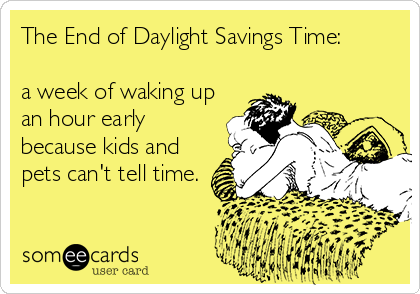Blog
TIPS FOR SURVIVING DAYLIGHT SAVING ENDING
Set Your Little One's Clock for Good Sleep
Set Your Little One's Clock for Good Sleep
Daylight Saving Time can play havoc with your little ones sleep
Whenever we move the clocks forward or back during daylight saving time, we can create sleep disruptions, which in turn can lead to sleep deprivation for our little ones and ourselves. Here are some tips to help with a smooth transition and get you through this challenging time without any major interferences to your family’s sleep.
I recommend starting the time adjustments move around a week or so before daylight saving ends and our clocks turn back. After about a week or so, you little one should be back to their usual bedtime.
Start by moving their bedtime and have them in bed 15 minutes later then you would normally. So, if your little one goes to bed at 7pm, then have them in bed at 7:15pm. Stick to this new bedtime for around 2 days, and then continue to push their bedtime 15 minutes later every 2 nights until you have reached the new daylight saving end time.
Once you have started moving the bedtime later, then try and keep your little one in their bed 15 minutes later than you normally would for the morning. If they wake early, then try and keep them in their bed until it is time to get up. Keep pushing their morning wakeup time 15 minutes later every 2 days until you reach the new daylight saving end time.
Be consistent as possible with your littles one’s food and daytime sleep schedule, as well as shifting all of their meals, snacks and day naps forward 15 minutes every 2 days, to entrain circadian rhythm.
Ensure you stick to your usual bedtime/nap routine and maintain your little one’s bedtime ritual.
In the lead up to daylight saving ending, start by preparing the family room by turning the Tv down, shutting blinds/curtains and dimming the lights. Making sure there is no screen time as least an hour prior to bed. As bright light can stop our sleep hormone ‘melatonin’ from releasing.
Make sure their room is as dark as you can make it, especially in the morning, to reduce early morning rising.
Keep noise levels low of a night time and in the morning, white noise is a great way to block out any outside noise. eg. noisy neighbours, traffic, birds etc. https://snottynoses.com.au/homedics-sound-spa-portable/
Expose your little one to natural sunlight first thing in the morning. Sunshine has a great effect on our circadian rhythm and will help reset the bodies internal clock to the new schedule.
Toddlers/Pre-schoolers may provide resistance, especially as the sun is still up when they go to bed, so consistency is the key in this age group.
A sleep clock can be helpful for toddlers through to pre-schoolers, if your little one already has one, then simple adjust the time as per above. https://snottynoses.com.au/sam-sheep-sleep-clock/
By being consistent, creating clear boundaries (especially with Toddlers/Preschoolers) and positive sleep routines you will assist your little one with this challenging time and make the transition much smoother. Remember it takes time for their internal clock to adapt and for their body to regulate itself to the time difference.
Sleep Tight xxx
If you have any troubles with your little one’s sleep or settling, we would love to help make this journey a positive one.




